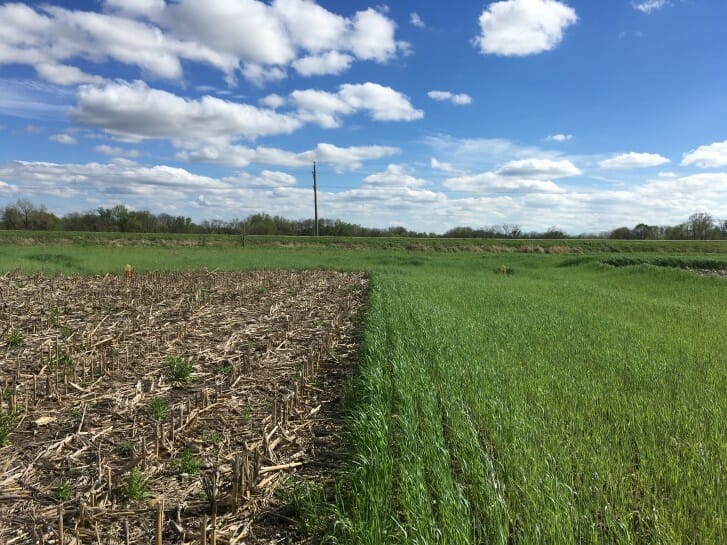Winter Cereal Rye Cover Crop Effect on Cash Crop Yield, Year 9
How does a cover crop affect corn and soybean yields? Winter Cereal Rye Cover Crop Effect on Cash Crop Yield: Year 9 is now available! This is a long-term project being conducted by Iowa Learning Farms and Practical Farmers of Iowa. Between 2009 and 2017, 12 farmer-cooperators have contributed to 63 site-years of on-farm research to investigate what effect a cereal rye cover crop might have to yields of corn and soybeans.
Over the course of this project, farmers reported that in 59 of 63 site-years, properly managed cover crops had no negative effect on corn and soybean yields. Of those 59 site-years, soybean yields were improved by cover crops in 8 instances and corn yields were improved in 2 instances (both occurring in 2016).
How the Study was Conducted
This long-term study employs a “paired strips” design. Cooperators established and maintained replicated strips of “cover” and “no cover” that run the length of their field for the duration of the study in corn-soybean rotations. Cooperators were allowed to manage their cover crops and cash crops however they saw fit. The table below shows how the five farmer-cooperators who participated in 2017 managed cover crops and cash crops during the growing season.
Corn and Soybean Yields 2015 – 2017
In the past three years, corn yields at locations have mostly been at or above 200 bu/ac (Fig. 1). In 2016, corn yields were improved by the cover crop at West Chester and New Market. At New Market, an especially wet year reduced corn yields overall but the cover crop appeared to soften that blow.
Soybean yields have been near 60 bu/ac the past three years with improvements from the cover crop being observed at New Market, West Chester and Kalona in 2015 and New Market again in 2017 (Fig. 2).
Long-Term Trends
Over the course of this project, 35 site-years have been dedicated to determining the effect of the cover crop on corn yields and 28 site-years have been dedicated to determining the effect of the cover crop on soybean yields. In the majority of cases, yield were not affected by the cover crop. Read the full report here.
For more information on this study, contact Stefan Gailans at [email protected]
This project has been made possible by funds provided by the State Soil Conservation Committee, the Iowa Department of Agriculture and Land Stewardship, NCR-SARE, the Walton Family Foundation and Iowa Learning Farms.





